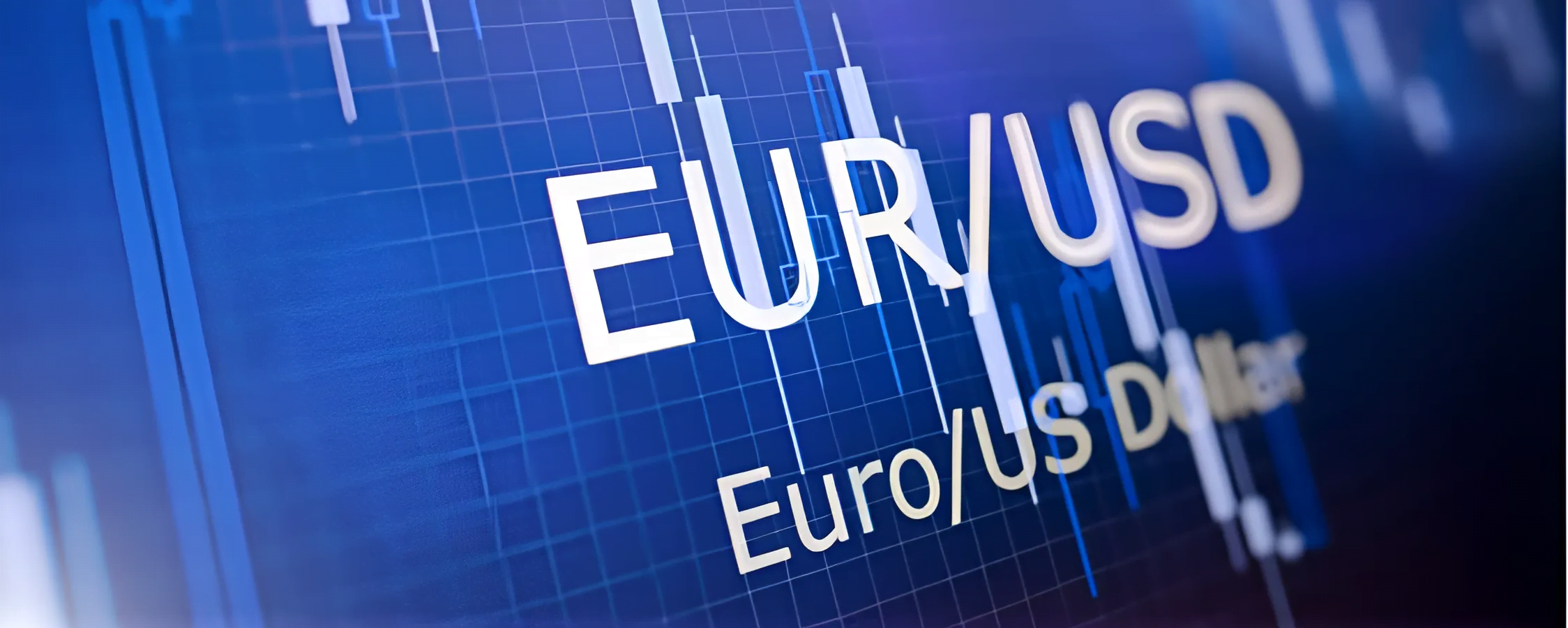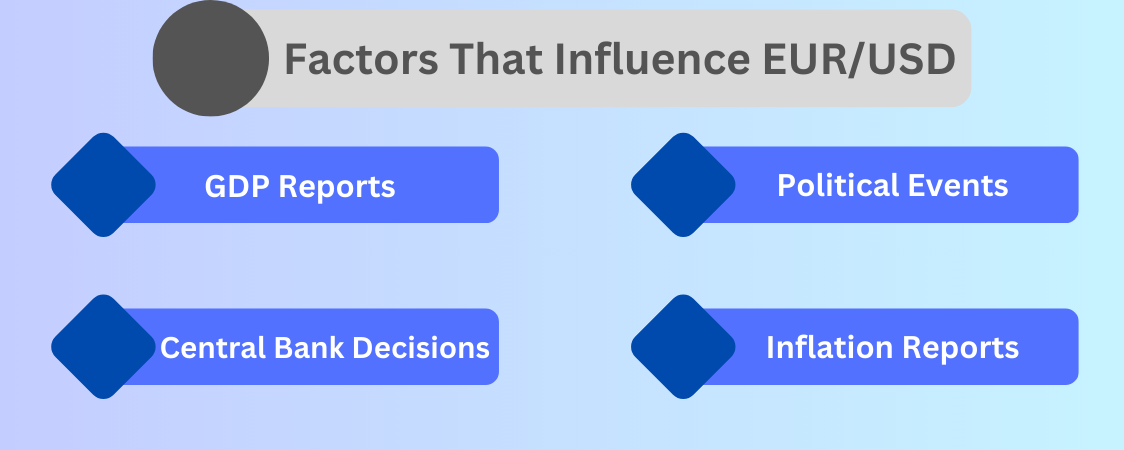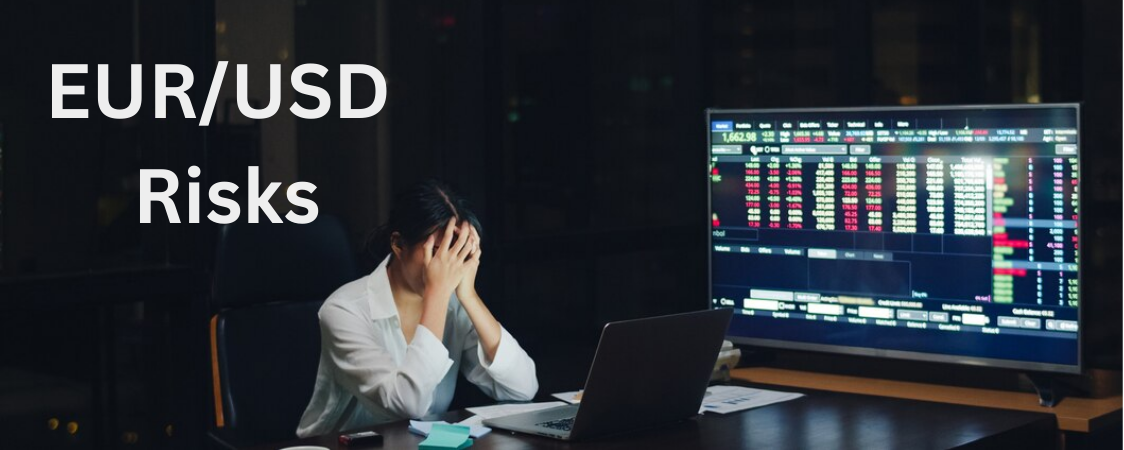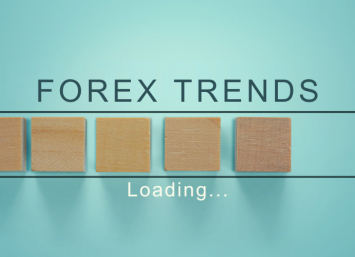5 Things To Know About Trading The EUR/USD Pair

This article will examine five key aspects traders need to understand when looking to trade the EUR/USD currency pair. As one of the most heavily traded pairs in global foreign exchange markets, EUR/USD offers substantial opportunities for well-informed participants.
By learning about EUR/USD price behavior, analysis techniques, and risk mitigation practices, traders will be better equipped to successfully navigate this highly liquid market over different timeframes. Let's get started.
1. What is The EUR/USD Currency Pair?
The EUR/USD currency pair, also referred to as the euro versus the US dollar, is one of the most heavily traded currency pairs in the world. It represents the value of the euro relative to the US dollar. For example, if the EUR/USD is quoted at 1.1500, it means it takes 1.1500 US dollars to purchase one euro. The EUR/USD pair is a major cross-rate that provides insight into the relative strength and movement of these two leading global currencies.
The eurozone and US economies are two of the largest in the world, which contributes to high volumes in EUR/USD trading. Daily turnover in this pair averages over $650 billion, significantly more liquidity than any other currency pairing. Its high trading volumes provide opportunities for both short-term technical traders as well as longer-term fundamental traders. The large amount of capital moving in and out of this market daily also means EUR/USD price action tends to be highly responsive to major economic indicators and geopolitical events relating to the European Union and the United States.
2. What Factors Influence The EUR/USD Exchange Rate?

There are a variety of macroeconomic and geopolitical factors that influence the value of the euro versus the US dollar over time. Two of the most significant are relative interest rate differentials and economic growth between the eurozone and the US.
If the European Central Bank raises interest rates but the Federal Reserve doesn't, it will increase the appeal of eurozone assets and cause demand for the euro to rise. Similarly, stronger economic data showing faster GDP growth or job creation in the eurozone versus the US would boost the prospects of the single currency. Other factors such as inflation readings, government debt levels, and political stability also contribute to shifts in market sentiment around the relative strength of the euro area and greenback.
Overseas demand for exports between the regions also impacts the exchange rate. A higher-valued euro would negatively impact eurozone producers by making their goods and services more expensive for foreign buyers. On the other hand, stronger US consumption from domestic or emerging market sources increases dollar demand. Geopolitical tensions and their effect on economic ties between the EU and America represent another important influencer of EUR/USD rates. Traders must carefully weigh all of these macro elements when trading this currency pair.
3. What Are Some Common EUR/USD Trading Strategies?
There are a variety of strategies that traders employ when looking to enter the market and profit from movements in the EUR/USD exchange rate. Two of the most popular include trend-following and mean reversion strategies.
Trend-following strategies aim to identify bullish or bearish trends in the EUR/USD rate and trade in the direction of that prevailing trend. Traders will look for technical indicators like moving averages or Bollinger Bands to signal when a new trend may be developing and will hold positions until the trend shows signs of exhaustion. Mean reversion strategies, conversely, look for periods when the euro has overshot its 'fair value' versus the dollar based on interest rate differentials and economic data and will trade counter to that short-term extreme.
Other strategies include trading major macro event risk where traders position ahead of key data releases and then exit afterward. Swing trading strategies attempt to capitalize on oscillating price patterns over periods ranging from a few days to a few weeks. longer-term position traders may base trades on fundamental factors such as interest rate expectations. The strategy selected depends on the individual trader's risk tolerance and time horizon for holding EUR/USD positions.
4. How Can Fundamentals Be Used To Trade EUR/USD?
In addition to technical indicators and price action, EUR/USD traders must also consider how economic fundamentals and geopolitical events will impact currency valuations going forward. Fundamental analysis is especially important over longer timescales. For example, traders may take the following fundamental views into account:
If a trader expects recent lackluster eurozone economic data to lead the ECB to maintain an accommodative policy bias longer than the Fed, they may short EUR/USD in anticipation of the rate differential gap closing. In contrast, positive growth surprises coupled with a hawkish signal from ECB officials could see fundamentals support a long EUR/USD position on expectations of higher rates.
Geopolitical uncertainties stemming from events like ongoing Brexit negotiations or elections in major eurozone nations may present opportunities to trade expected short-term volatility. Traders could also analyze fiscal policies between the regions for increasing stimulus or austerity measures to gauge relative demand. By incorporating macro analysis into their strategies, traders gain insight into where valuations may be headed over the medium term.
5. What Risks Should EUR/USD Traders Be Aware Of?

While the large liquidity in this pair presents many potential trading opportunities, it also carries certain risks that traders need to manage carefully. A few key risks include:
- Political/event risk - Major unforeseen announcements from bodies like the ECB or OECD impacting either region can cause sudden gap movements in EUR/USD. Tight stops are necessary.
- Economic data misses - Unexpected changes to major economic indicators like inflation, retail sales, or employment have the potential to upend fundamental assumptions.
- Changing interest rate forecasts - Global central bank policies and shifts in rate hike/cut expectations are hard to predict perfectly and can whipsaw currencies.
- Overleveraging - Due to high volatility, EUR/USD trades require relatively tight stops to limit risk. Traders should not take on excessive position sizes.
- Liquidity issues - Though deep, EUR/USD can experience low liquidity during times of heightened market stress, disrupting strategies relying on the immediacy of order execution.
- Regulatory factors - Foreign exchange remains an unregulated market globally with ever-changing rules and tax implications traders must stay on top of.
Risk management through diversification, stop losses, trading smaller position sizes, and limiting overall portfolio leverage is crucial for surviving unexpected EUR/USD moves over both short and long timeframes.
Conclusion
So in conclusion, the EUR/USD currency pair offers massive opportunities for traders due to its heavy liquidity and sensitivity to developments impacting the eurozone and American economies. However, closely following technicals, and fundamentals, and managing risks appropriately are required to successfully profit from Trading The EUR/USD Pair over different time horizons. Strong discipline is needed to navigate this market's potential volatility.



